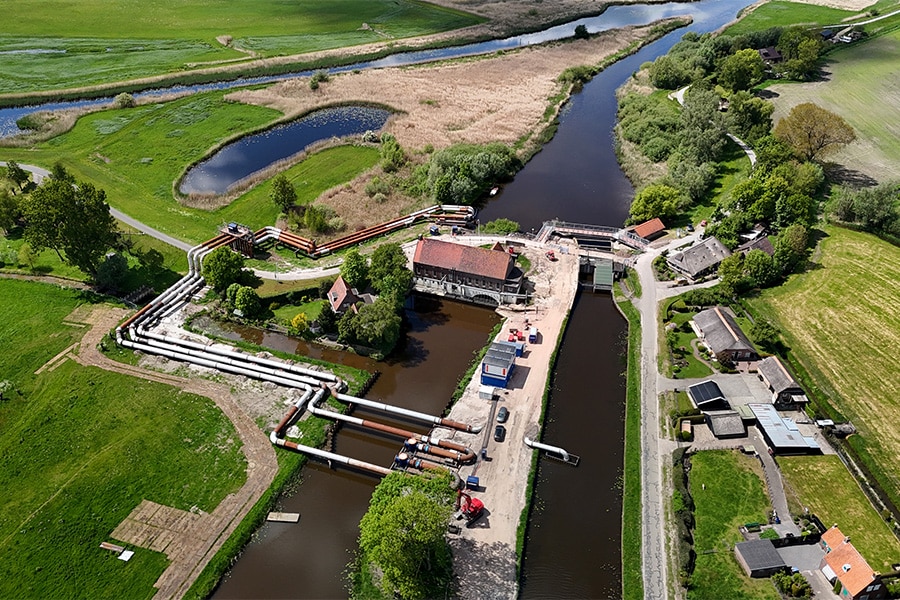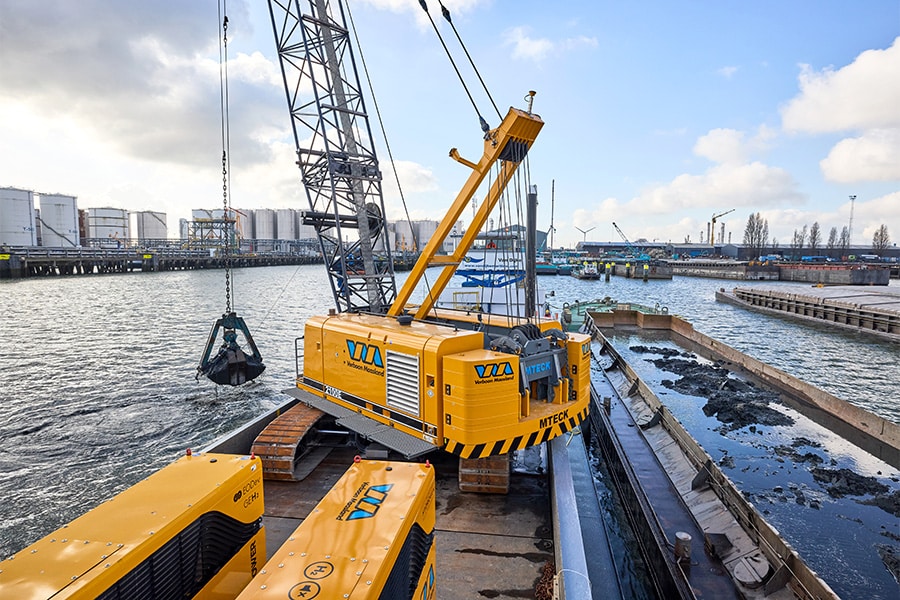
Major state highway maintenance East Netherlands successful
BAM Infra Nederland was commissioned by Rijkswaterstaat to carry out integral major maintenance (IGO) on the national roads in Gelderland and Overijssel in 2021 and 2022, including the A50. Maintenance on the A50 between the Beekbergen - Waterberg junctions, one of the most important corridors in the eastern Netherlands, was also the most challenging subproject. Heading north, the highway between Arnhem and Apeldoorn was completely closed for 16 days over a length of 21 kilometers. Unique by Dutch standards. A mega-job for BAM Infra Nederland and partners, in the middle of the 2022 construction holiday period, also under tropical temperatures.

The IGO project involved major maintenance on the major arterial roads in the eastern Netherlands, namely the A12, A15, A50, N18, A35/N35, N36 and N48. "It is in fact the successor to the 2018 and 2019 contract that we also carried out for Rijkswaterstaat," says Robert ten Bras, business manager at BAM Infra Nederland and at the time responsible for the tender and preparation of the 2021-2022 IGO project. The work included asphalt and construction maintenance and repairs to overpasses and noise barriers. Measures were also taken to make the roadsides safer, including the installation of new guide rails. "In the preliminary phase, much attention was paid to making agreements with all stakeholders and partners to ensure the safety of both traffic and road workers during the work and to limit searching traffic on the underlying road network. This was also continuously monitored during execution, and adjusted where necessary, and resulted in positive environmental feedback."

Only benefits
The most extensive subproject within the 2021-2022 IGO project was the approach to the A50 between the Waterberg junction and the Beekbergen interchange, a stretch of 21 kilometers. The southbound carriageway was cut into nine phases and weekend closures, while the northbound carriageway was tackled all at once. "With a longer closure, you can do comparatively more work and you also have more time to shift gears or anticipate any unforeseen issues. And that is reflected in the quality," says Rense Oving, project manager at BAM Infra Nederland. "Moreover, it benefits safety. We are therefore absolutely in favor of such closures and Rijkswaterstaat is also increasingly going along with this. In this case, due to the accessibility of the area, it was unfortunately not possible to completely close off both sections for an extended period of time. A longer closure in the southern direction turned out to have a much greater impact on the surroundings in the spring and/or autumn because of the higher traffic volumes. Therefore, it was decided to carry out this driving direction in nine weekend closures, five of them in the spring and four in the fall."
ADAPT Roads
Before BAM Infra Nederland began the replacement operation, the existing acreage of all national roads was accurately mapped. "In doing so, we used modern technology, such as ADAPT Roads, a tool that combines data, technology (including Artificial Intelligence) and domain knowledge. A scan car is used to collect all data on assets on and around the road for a real and up-to-date picture of the condition of pavements, structures and guard rails," Ten Bras explains. "An important starting point for consultation and to be able to go into execution without surprises." And surprises indeed did not occur. Oving: "The 16-day closure even opened to traffic earlier, despite the sweltering heat in the summer of 2022."

Sustainability measures
As a sustainable construction company, BAM Infra Nederland also took the necessary sustainability measures on the IGO project. In order to make a positive contribution to a more beautiful Netherlands. For example, an asphalt mixture was used with a high degree of recycled material as high as 70%. "Through special processing techniques, we arrived at optimal reusability of the milled asphalt," explains Oving. "This resulted in substantial savings in raw materials and CO2-emissions. We also used our electric asphalt spreading machine for the first time on this project, and our asphalt spreading machine with hydrogen combustion engine proved its service, as well as the electric guide rail machine for placing the boards mechanically (read: ergonomically and safely). In addition, in cooperation with the Department of Public Works, we laid a test section with a low-temperature asphalt mixture (LEAB) with panacea, a synthetic fiber. The goal is to eventually get the product validated for nationwide application after extensive testing." Ten Bras: "Such a development is important with a view to (substantially) lowering the production temperature of the asphalt to just above 100 degrees Celsius, instead of the current 160 degrees with modified bitumen."
Both men look back on the project with a good feeling. "It went extremely smoothly," Ten Bras believes. "Thanks also to the pleasant cooperation and coordination with Rijkswaterstaat, the surrounding parties and our regular partners, with whom we have approached every Rijkswaterstaat project for many years. That makes it possible for us to prepare a project well and together to unblock new or unforeseen developments. We proved that again here. A team effort."



